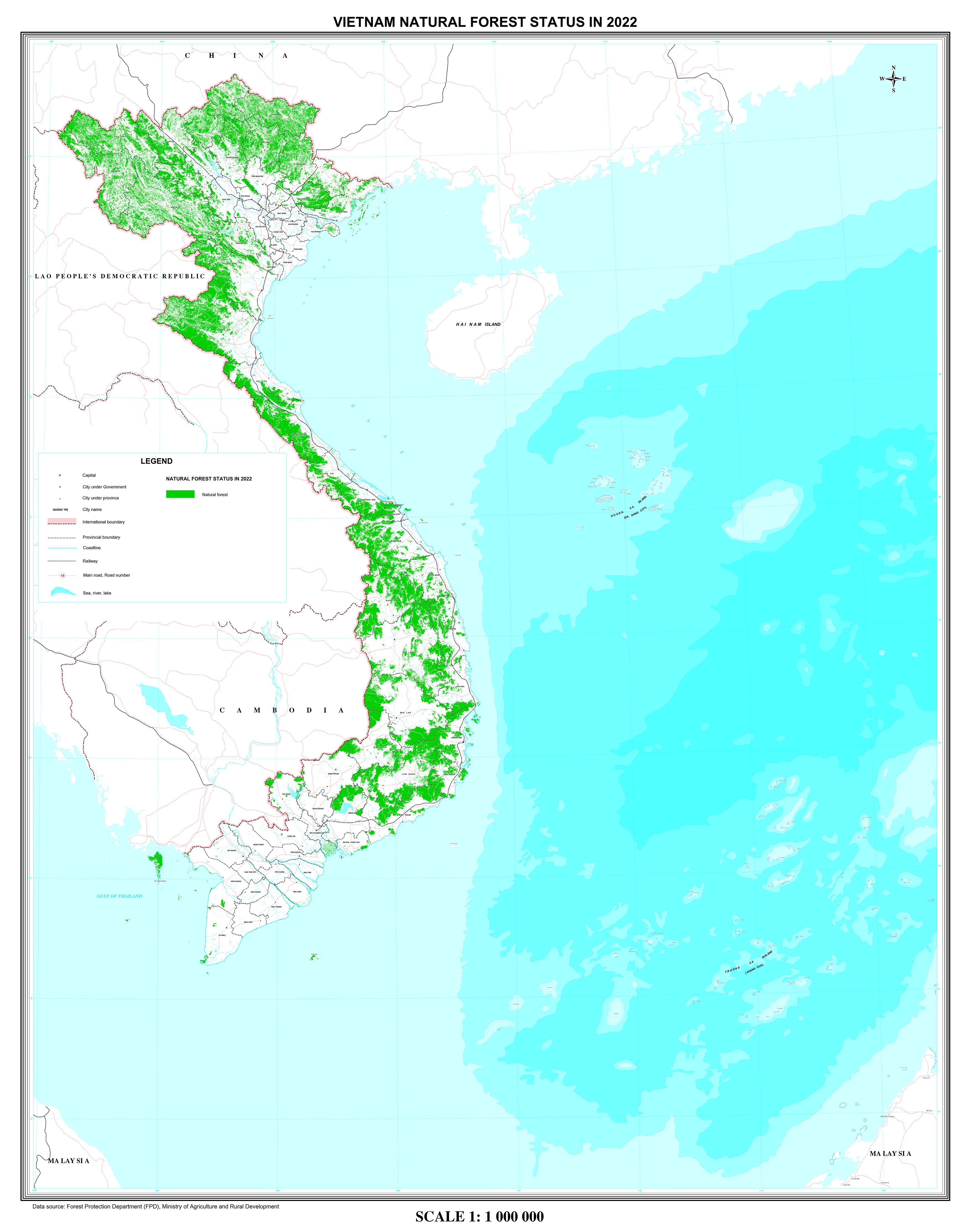On this page
- E1
- E1.1
How does Viet Nam’s policies, laws and regulations define natural forests and biodiversity?
- E2
- E2.1
- E2.2
What are the outcomes for non-conversion of natural forests in Viet Nam?
- E3
- E3.1
- E4
Incentivising the conservation of natural forests, biodiversity and ecosystem services
- E4.1
- E5
- E5.1
How does Viet Nam seek to enhance the social and environmental benefits of REDD+?
- E5.2
What are the social and environmental trends in Viet Nam’s forested areas?
Content with Safeguard E E2 .
In Viet Nam, conversion of forests means a change in the purpose of primary use of the forest that results in a change in the forest classification of the forest. Conversion of natural forests, therefore, means a change in the purpose of primary use of the forest that results in a change in the classification of the forest from natural forest to a non-forest or plantation forest classification (e.g. to plantation or to agricultural land). The requirements and conditions for repurposing of forests and the powers to convert forest use are regulated by Vietnamese law[1].
Under the Law on Forest Protection and Development (2004), changing the use purpose of natural forests to another use purpose must be based on the conversion criteria and conditions prescribed by the Government[2]. The recently approved Law on Forestry (2017, effective 1 January 2019), explicitly prohibits the conversion of natural forests (except in cases of nationally important projects, national defence projects, or other critical projects approved by the government)[3]. The requirements for Environmental Impact Assessment and Social Impact Assessment in the development of master land use plans and assessment of potential REDD+ benefits and risks for Provincial REDD+ Action Plans (PRAPs) also prevent planning for the conversion of natural forests[4]. Implementation guidelines have not yet been issued for the new Forestry Law (2017); these will be prepared for consultation, revision and approval.
The Ministry of Agriculture and Rural Development (MARD) is the focal point for implementation of forestry laws in Viet Nam. The Ministry of Defence, the Ministry of Public Security, the Ministry of Natural Resources and Environment, and other ministries and ministerial-level organizations are responsible for collaborating with MARD in performing state management of forestry within the scope of their tasks and powers.
At the provincial level, the Departments of Agriculture and Rural Development are responsible for developing PRAPs for appraisal and approval by the Provincial People’s Committees. The Ministry of Natural Resources and the Environment, and provincial Departments of Natural Resources and the Environment within their respective localities, are responsible for oversight, appraisal and approval of social and environmental impact assessments.
[1] The Law on Forestry (2017), Articles 18-21. Vietnamese; English
[2] The Forest Protection and Development Law (2004), Article 27. Vietnamese; English; see also Government Decree No. 23/2006/ND-CP. Vietnamese; English and the Prime Minister’s Decision No. 34/2011/QĐ-TTg. Vietnamese; English
[3] The Forestry Law (2017, effective 1 January 2019), Article 14. Vietnamese; English
[4] Government Decree No. 18/2015/ND-CP; MARD Decisions No. 5414/2015/QD-BNN-TCLN. Vietnamese; English
A number of potential benefits and risks related to the non-conversion of natural forests, and their biodiversity and ecosystem services, have been identified through REDD+ planning processes at the national and subnational levels. These benefits and risks, and measures suggested to enhance benefits and reduce risks, are discussed in detail under Safeguard E3.1.2, which looks at the conservation of natural forests and biodiversity. Safeguard E3 also provides information on National REDD+ Programme policies and measures that support conservation of natural forests.
- Trends in natural forest cover
-
The following information shows the status and trends for a number of indicators related to natural forests in Viet Nam nationally. These figures provide an insight into the progress of implementation of relevant regulations to prevent the conversion and promote the conservation of natural forests, and of national-scale implementation of relevant REDD+ policies and measures.
Natural forest cover statistics
 Table showing natural forest cover (in three management categories) versus plantation and other land in percentages or ha, nationally and by forested province
Table showing natural forest cover (in three management categories) versus plantation and other land in percentages or ha, nationally and by forested province
Area and forest cover rate of Vietnam 2021
Year 2021 [1]
Area with forest (ha)
Natural forest (ha)
Plantation forest (ha)
Forest cover rate (%)
Total of the country
Total
14.745.201
10.171.757
4.573.444
42,02
Northwest
Total
1.808.285
1.584.974
223.310
47,06
Northeast
Total
3.970.714
2.331.602
1.639.112
56,34
Red river delta
Total
83.326
46.326
37.000
6,18
North Central
Total
3.131.061
2.201.435
929.625
57,35
The coastal
Total
2.451.496
1.566.677
884.820
50,43
Highlands
Total
2.572.701
2.104.097
468.604
45,94
South East
Total
479.871
257.304
222.566
19,42
Southwest
Total
247.748
79.341
168.407
5,44
[1]Attached to Decision No: 2860/QĐ-BNN-TCLN July 27, 2022 of the Ministry of Agriculture and Rural Development
Natural forest cover map in 2022 -

 Map of current status of natural forest vs plantation and other land
Map of current status of natural forest vs plantation and other landConversion of natural forest nationally
 Table showing change in natural forest nationally and that has been converted to other forest/land use classes[1]
Table showing change in natural forest nationally and that has been converted to other forest/land use classes[1]
-
- Trends in other land and ecosystem types
- Content not yet available.

